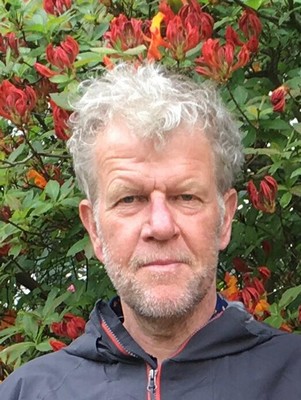Wie zorgt er voor de kinderen?
Sekse rollen beschrijven bij vogels de verschillen tussen de seksen in onder meer baltsgedrag, concurrentie voor partners, paarvorming en zorg voor de jongen. Er zijn verschillende verklaringen geopperd voor die verschillen, maar geen daarvan is gebaseerd op breed uitgevoerd onderzoek. Daarom besloot een internationale groep experts om gegevens over 1800 van de ongeveer 9000 verschillende vogelsoorten te analyseren. De resultaten laten zien dat de verhouding in aantallen volwassen mannetjes en vrouwtjes de belangrijkste oorzaak zijn voor verschillen in sekse rollen. De resultaten zijn op 25 februari gepubliceerd in Ecology Letters.
Bij vogels bestaan soms grote verschillen tussen de seksen, zowel in uiterlijk (zoals grootte of kleur) als in gedrag (bijvoorbeeld baltsgedrag of zorg voor jongen). ‘Er zijn verschillen tussen soorten, maar er bestaat ook grote variatie binnen soorten’, zegt Jan Komdeur, hoogleraar Evolutionaire Ecologie aan de RUG. Dit kan invloed hebben op het vermogen van de vogels om zich aan te passen aan veranderende omstandigheden, bijvoorbeeld klimaatverandering, of door de mens veroorzaakte bedreigingen als het verlies van de natuurlijke leefomgeving. Het is daarom belangrijk te begrijpen hoe de verschillen in sekse rollen zijn geëvolueerd.

Kieskeurig
Een klassieke verklaring is de investering in voortplantingscellen: vrouwtjes leggen een paar eieren per jaar, vol met voedingsstoffen, terwijl mannetjes beschikken over een bijna onuitputtelijke voorraad spermacellen. ‘Het idee is dat vrouwtjes hierdoor kieskeuriger zijn’, legt Komdeur uit. Maar dat is op zichzelf niet genoeg om alle verschillen in sekse rollen te verklaren. Er zijn ook andere factoren geopperd die daaraan bijdragen, zoals klimaat, de levensgeschiedenis en sociale factoren. ‘Maar er heeft nooit een analyse plaatsgevonden van het effect hiervan in een doorsnede van alle vogelsoorten.’
Al in 2014 besprak Komdeur deze kwestie met zijn collega Tamás Székely, hoogleraar aan het Milner Centre for Evolution in het Verenigd Koninkrijk, die toen enkele maanden als gastonderzoeker in Groningen verbleef dankzij een beurs van onderzoekfinancier NWO. ‘We kwamen in contact met een postdoc, Alejandro Gonzalez-Voyer, die wel zin had om die analyse op te pakken.’ Dat bleek een enorme taak te zijn: er zijn zo’n 9000 vogelsoorten, waarvan hij gegevens moest verzamelen over sekse rollen en de variabelen die daar effect op kunnen hebben.

Ingewikkeld
De sekse rollen die in dit onderzoek zijn bekeken waren competitie voor en het aantrekken van een partner, paarvorming en ouderlijke zorg voor de jongen. Seksuele verschillen in lichaamsgrootte of -kleur, verschillende sociale vormen van paringsgedrag en de investering van de ouders in zorg na de paring dienden als kenmerk voor deze sekse rollen. Vier mogelijke oorzaken van verschillen in sekse rollen zijn geanalyseerd: het klimaat waarin een soort leeft, de levensgeschiedenis (zoals gemiddelde levensduur), de sociale omgeving (de sekse-ratio bij volwassen vogels) en de fylogenie (de afstamming van een soort).
‘De klus was veel ingewikkelder dan we al dachten’, erkent Komdeur. ‘Het kostte al snel een week om dit alles voor één soort te bepalen. Uiteindelijk zijn er zo’n zesduizend soorten onderzocht, waarbij we voor 1800 soorten alle gegevens konden vinden. Alleen die zijn gebruikt in de analyse.’ De resultaten lieten zien dat klimaat, levensgeschiedenis en fylogenie bij vogels geen significant effect hebben op de sekse rollen. ‘Dat was een verrassing, aangezien de literatuur suggereerde dat zeker klimaat en levensgeschiedenis daarvoor belangrijk zijn. Maar dat gebeurde vaak op onderzoek van maar een paar soorten.’

Sekse-ratio
De enige factor die een significant effect had op sekse rollen was de sociale omgeving, en dan specifiek de sekse-ratio, het verschil in aantallen volwassen mannetjes in vrouwtjes. Zoals bekend was zorgen mannetjes meer voor de jongen wanneer er een overschot is aan mannen. Een verklaring hiervoor is dat bij zo'n overschot de concurrentie tussen mannen heviger en dus kostbaarder is. Daardoor is het gunstig voor hen wanneer ze bij hun "gezin" blijven en energie steken in de zorg voor hun jongen. En wanneer er juist een overschot is aan vrouwtjes hoeven die niet veel energie te steken in het vinden van een partner en kunnen ze meer energie in de jongen stoppen.
De onderzoekers hebben vastgesteld dat de statistiek gevoelig genoeg was om in een vergelijking tussen 1800 soorten belangrijke verschillen zichtbaar te maken. Ze corrigeerden verder hun uitkomsten bovendien voor verstorende factoren. De biologen vonden wel een grote variatie in sekse rollen binnen soorten. ‘Het komt maar zelden voor dat die rollen helemaal vaststaan bij een soort.’ De sekse ratio bij volwassen dieren wordt bepaald door verschillen in sterfte, die varieert tussen soorten en kan worden veroorzaakt door bijvoorbeeld klimaatverandering. Dit soort processen moet in een vervolgonderzoek nader bestudeerd worden. Komdeur: ‘We weten nog lang niet alles, maar ons onderzoek laat zien dat de sociale omgeving een belangrijke factor is in het ontstaan van sekse rollen.’
Referentie: Alejandro Gonzalez-Voyer, Gavin H. Thomas, András Liker, Oliver Krüger, Jan Komdeur and Tamás Székely: Sex roles in birds: Phylogenetic analyses of the influence of climate, life histories and social environment. Ecology Letters, 25 februari 2022
Meer nieuws
-
17 december 2025
Ben Feringa wint Feynmanprijs
-
11 december 2025
Stormachtige planeten en een onverwachtse atmosfeer

